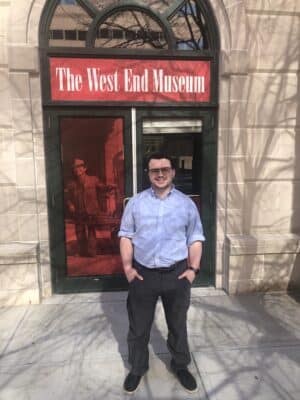A 2022 water leak that forced the shutdown of the West End Museum provided the impetus for a redesign adding interactive exhibits and more space for community events.
“We really wanted to make the museum more dynamic and broadly accessible,” said Sebastian Belfanti, who was named the museum’s first full-time in March.
A flexible format will include collapsable exhibits, enabling the 4,000-square-foot facility to host more community events. Interactive digital exhibits will allow curators to update content, including weekly history features, Belfanti said.
The $1.4 million project was designed by Chan Ascher Architects of New York on a pro bono basis. Principal Benjamin Ascher is the son of Lois Ascher, secretary of the museum’s board of directors.
A January 2022 water leak flooded the ground-floor museum at 150 Staniford St., which chronicles the history of the densely-populated enclave largely demolished during urban renewal projects in the late 1950s, and forced its indefinite closure.
Although Belfanti and other volunteers were able to save some of the museum’s archives, previously located in storage space, most of the exhibits were destroyed.
Then the museum had to wait a year as building ownership conducted repairs to utility areas, before turning the museum space back to operators in late winter.
The new exhibits will include interactive displays, said Belfanti, a native of New York state who studied geology at Vanderbilt University and started volunteering at the museum four years ago after moving to Boston.
The museum received a $400,000 grant from Massachusetts General Hospital along with other private donations and public grants. In addition to Belfanti’s new role, the museum this year hired another volunteer, Robert Potenza, as its new archivist and curator.
In November, the Boston Planning & Development Agency approved the allocation of $569,118 in community benefits payments from the Bulfinch Crossing and Hub on Causeway developments toward the museum restoration.
“We ended up reworking things because we really wanted to modernize the museum,” Belfanti said. “The whole space will be occupied on a day-to-day basis, which is very different from the way it used to be.”









